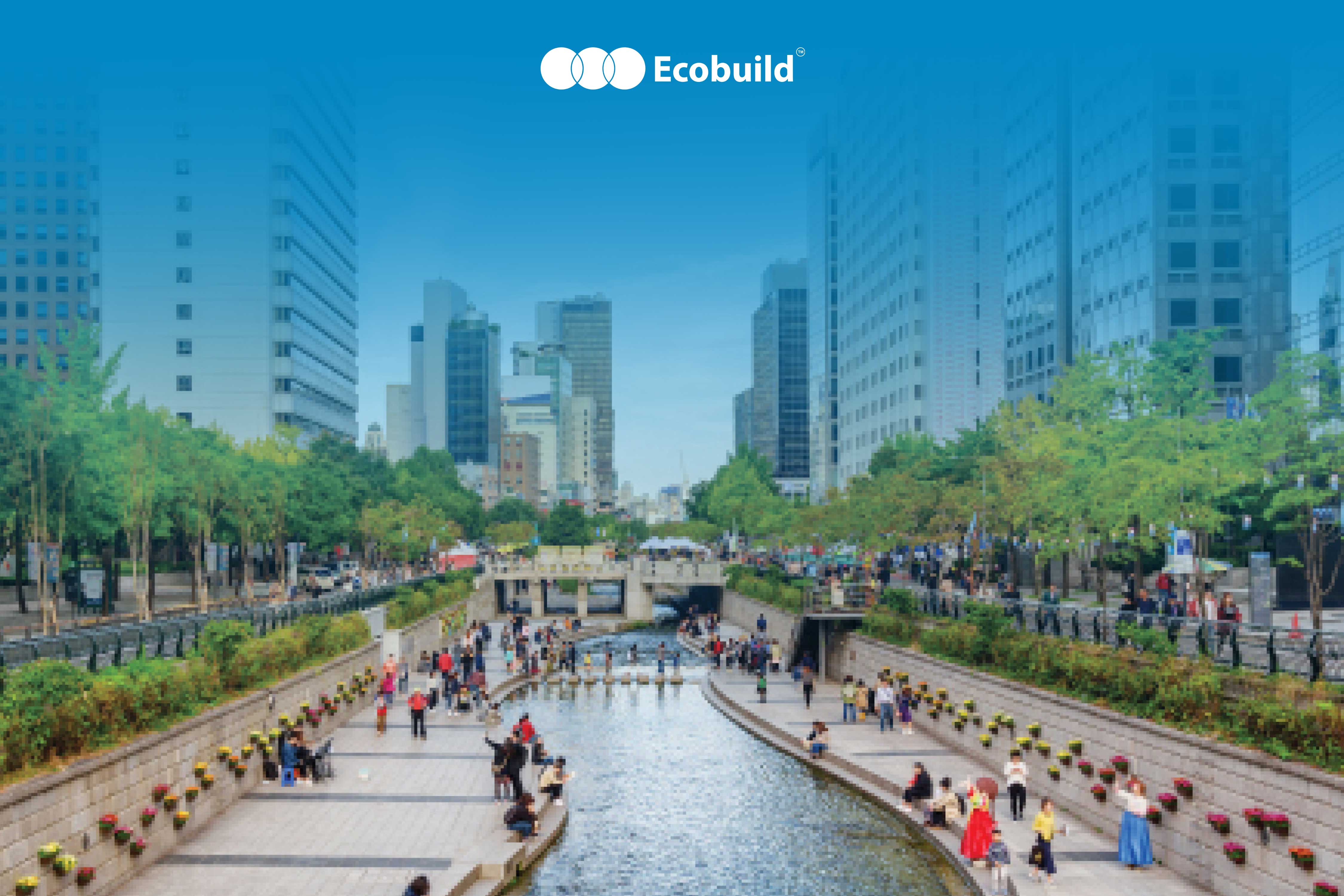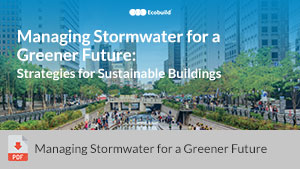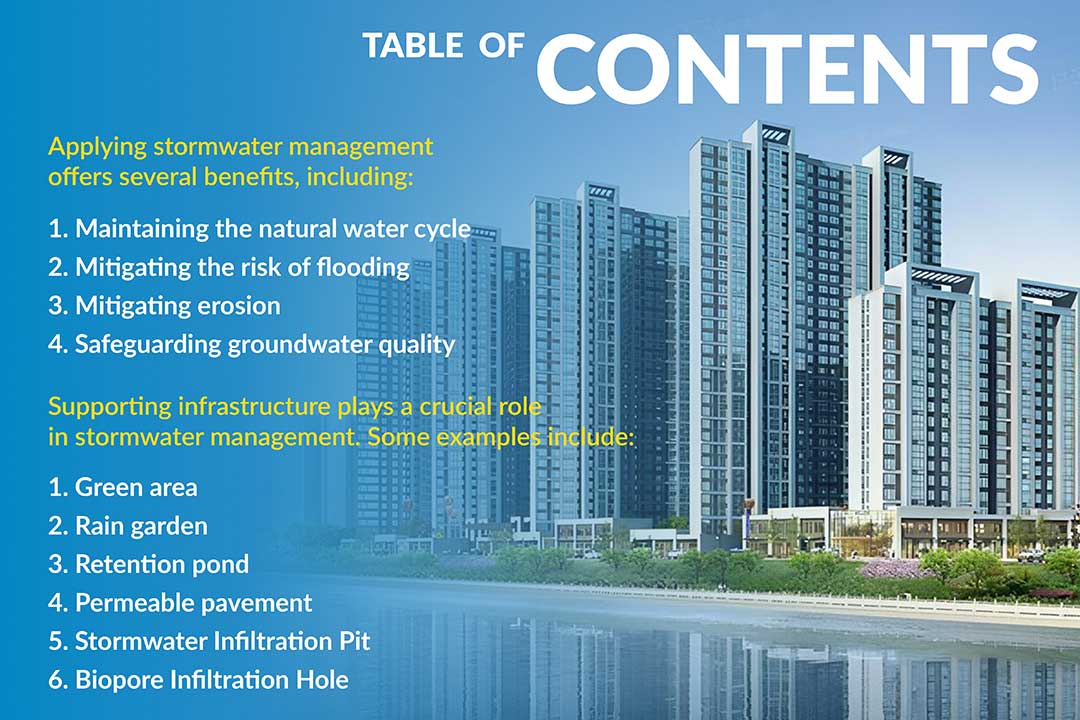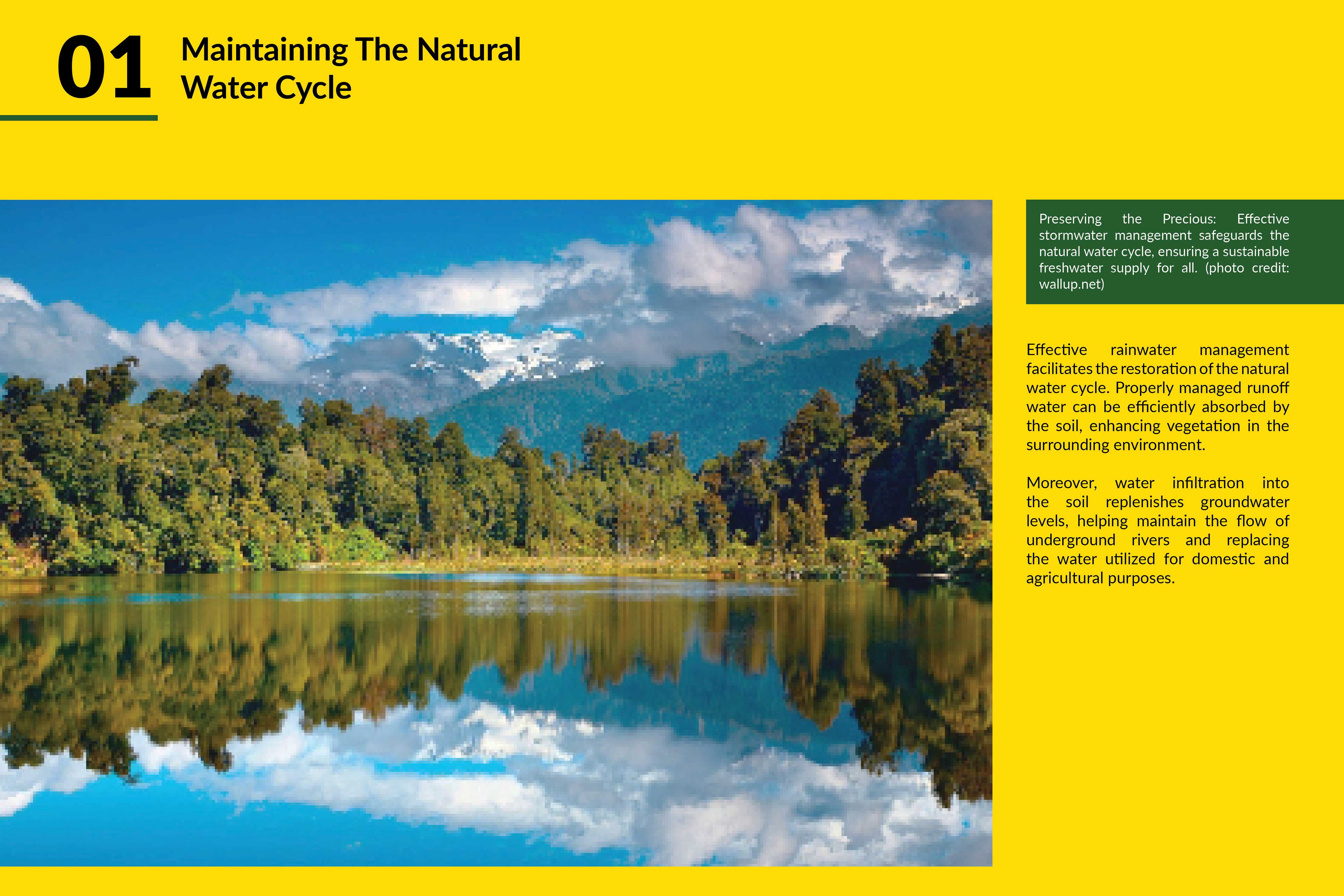Urbanization leads to changes in land use, such as removing vegetation and replacing permeable surfaces with impermeable ones. These modifications affect the flow of surface runoff during storms, causing increased volumes and peak flows of stormwater runoff (Goonetilleke et al., 2005).
Human activities in urban areas also generate waste and pollutants that can be washed into water bodies during rainfall.
Therefore, urban areas require drainage systems to ensure the functionality of constructed sites and protect public health, as mentioned by Barbosa (2012) in a water research special issue on stormwater in urban areas.
Stormwater is a major contributor to water pollution in many countries, transporting contaminants to receiving waters.
Stormwater differs in quality and quantity from domestic sewage, with heavy metals being a significant source in stormwater (German et al., 2005; Gasperi et al., 2010; Hvitved-Jacobsen et al., 2005: Gasperi et al., 2010), while wastewater contributes organic and nitrogenous pollution (Burton and Pitt, 2002).
Sanitation infrastructure in urbanized areas varies globally, with some regions lacking studies on urban stormwater due to more pressing issues.
Combined sewer systems are common in older towns in Europe and the USA, and their wet weather flow discharges can severely impact receiving waters. The construction of separate sewer systems in the past was primarily driven by economic factors rather than flow and quality differences.
Various approaches have been implemented for urban sanitation management, ranging from directly discharging stormwater to water bodies to treating it in wastewater treatment plants.
Applying stormwater management offers several benefits, including:
- Maintaining the natural water cycle
Effective rainwater management facilitates the restoration of the natural water cycle. Properly managed runoff water can be efficiently absorbed by the soil, enhancing vegetation in the surrounding environment.
Moreover, water infiltration into the soil replenishes groundwater levels, helping maintain the flow of underground rivers and replacing the water utilized for domestic and agricultural purposes.
- Mitigating the risk of flooding
Urban pluvial flooding is emerging as a frequent hydro-meteorological occurrence that is directly linked to heavy rainfall. This phenomenon is raising significant concerns due to its widely destructive effects and its impact on society (Jiang et al., 2018).
In response to the increasing occurrence of pluvial flooding in urban areas, the Chinese government has implemented a range of policies and programs aimed at enhancing the development of drainage systems in cities.
One notable initiative is the introduction of “sponge cities,” which was officially launched in 2014. This national program represents a comprehensive approach to address urban pluvial flooding while simultaneously promoting ecological and environmental improvements.
Through this initiative, the government seeks to reshape and enhance the urbanization and development process, placing explicit emphasis on considering the urban water cycle.
Moreover, regular maintenance of these systems is essential to ensure their continued effectiveness.
- Mitigating erosion
Soil erosion occurs naturally when the top layer of soil is carried away by wind, water, or ice. Flooding is a significant factor in soil erosion and has significant consequences for the environment, agriculture, and infrastructure.
The agents responsible for soil erosion are the same as those for other types of erosion, including water, wind, ice, and gravity.
Arrington, a researcher from Alcorn State University states that running water is the primary cause of soil erosion due to its abundance and immense power, such as when heavy rainfall occurs.
Flooding plays a crucial role in soil erosion as it causes the displacement and loss of topsoil, leading to a decline in soil quality and reducing the amount of fertile land available for farming.
To prevent excessive erosion, stormwater management systems are designed to efficiently drain runoff water through pipelines until it reaches the designated outlet. These systems help mitigate the impacts of flooding and reduce soil erosion.
- Safeguarding groundwater quality
Urban areas are prone to the accumulation of various pollutants, including oil and pesticides, due to human activities. These pollutants can be transported along with the runoff water flow, posing a threat to groundwater quality.
By implementing effective stormwater management strategies, such as utilizing filtration systems and retention ponds, the impact of pollution can be minimized.
These measures help to intercept and treat stormwater runoff, preventing pollutants from reaching water sources and preserving the quality of groundwater.
Supporting infrastructure plays a crucial role in stormwater management. Some examples include:
- Green area
The presence of green open spaces aids in the restoration of natural ecosystems, specifically ensuring the preservation of the water cycle.
These areas facilitate faster absorption of runoff water by the soil, thus preventing flooding in the surrounding areas.
By providing permeable surfaces and vegetation, green open spaces promote infiltration, allowing rainwater to seep into the ground and recharge groundwater reserves.
This process helps maintain a balanced water table, supports plant growth, and reduces the strain on stormwater management systems.
- Rain garden
Rain gardens are integral components of localized stormwater control measures (SCMs) designed to manage and mitigate the impacts of stormwater runoff, as stated by environmental researchers from University of Auburn, in a journal published in 2019.
They can be defined as depressed areas within a landscape featuring vegetation, including grass and flowering perennials, with the primary function of collecting and infiltrating rainwater originating from roofs, driveways, or streets.
Rain gardens are characterized as relatively small, shallow, and strategically located depressions intended to capture runoff from impervious surfaces like parking lots, sidewalks, and roads.
They are typically constructed with native plant species and deeply rooted vegetation, enabling enhanced water absorption. Rain gardens are designed to temporarily retain and detain rainwater during storm events, facilitating the infiltration of water into the underlying soil layers.
Scientific literature describes rain gardens as ecohydrological features that serve as constructed infiltration basins.
They incorporate various layers of filtration media, including engineered soil mixes, and may incorporate optional components such as underdrains and overflow mechanisms. These design elements aid in water filtration, promoting the removal of pollutants and sediments from the collected runoff.
It is worth noting that rain gardens differ from water gardens, as they are not constantly wet but rather serve as intermittent wetland features.
Their key purpose is to enhance rainwater retention, attenuate stormwater flows, and promote the sustainable management of water resources by facilitating the natural infiltration of rainwater into the surrounding soil, reducing the potential for downstream flooding and improving overall water quality.
- Retention pond
Wet retention ponds are extensively employed as structural stormwater best management practices (BMPs) with the primary objectives of reducing peak flows and prolonging flow duration.
Retention ponds can be categorized based on their size into two distinct groups. On one hand, large ponds or reservoirs serve as flood retention dams, flood control dams, water retention structures, and sediment traps.
On the other hand, small retention ponds are typically designed as fishing ponds, watering holes, or pools.
The dams associated with large retention ponds are predominantly constructed using concrete or a combination of materials, whereas small retention ponds involve simpler earthworks. (Steinman and Banovec, 2008).
- Permeable pavement
Permeable paving systems play a vital role in efficient stormwater management. These pavements are designed to facilitate the rapid flow of water into the stormwater management system.
They feature underlying pipes and gravel layers that enhance water drainage by allowing water to infiltrate through the pavement surface and into the ground. This helps prevent surface runoff and reduces the risk of flooding, while also promoting groundwater recharge and preserving the natural water cycle.
PoreBlock is an example of innovation in permeable pavement. PoreBlock has the ability to absorb water up to 1,000 mm per day. This capability is 100 times faster than conventional paving blocks.
Anisa, Co-founder and CEO of Tech Prom Lab, states that PoreBlock can infiltrate water up to 10,000 mm/hour, while conventional paving blocks have an infiltration rate of <10 mm/hour. The pores in PoreBlock allow water to flow through and permeate the soil, thereby maintaining groundwater reserves.
In addition to its significantly faster infiltration rate, PoreBlock also possesses a strength of 225-350 kg/cm2, making it suitable for parking areas and roadways.
Despite its excellent water permeability, PoreBlock remains robust enough to withstand loads up to 8 tons (an 8-ton truck can pass through a road made of PoreBlock).
- Stormwater Infiltration Pit
Infiltration pits are constructed to accelerate water absorption into the soil. These pits are usually filled with gravel, acting as a filter to remove impurities carried by the water flow.
One example of an innovative infiltration tank to store runoff water into the ground is Magnatank.
With its large storage capacity, Magnatank can efficiently collect and infiltrate significant volumes of stormwater, helping to reduce the burden on conventional drainage systems.
The modular structure of Magnatank allows for easy customization and scalability to meet specific project requirements.
Its durable construction ensures long-term reliability, with resistance to harsh environmental conditions and the ability to withstand heavy loads.
The high infiltration rate and efficient water absorption of Magnatank contribute to improved groundwater recharge and the preservation of natural hydrological processes.
Additionally, Magnatank’s ease of installation and low maintenance requirements make it a practical and cost-effective solution for stormwater management, providing long-term benefits for sustainable water resource management.
- Biopore Infiltration Hole
The reduction of permeable surfaces in urban areas has led to an increase in surface runoff, which can potentially result in flooding and inundation.
Traditional drainage approaches are often considered the most practical and cost-effective solution for managing surface runoff by swiftly diverting it away.
However, these conventional drainage systems have limitations for long-term use, as they require gradual expansion over time and significant financial investment, while often neglecting water quality considerations.
To address these challenges, a new concept known as sustainable urban drainage systems (SUDS) has been introduced. SUDS utilize various elements of the urban landscape, such as vegetated surfaces, to mimic the natural hydrological cycle.
The primary goals of SUDS are to facilitate stormwater infiltration into the ground, filter pollutants at the source, and provide temporary water storage capacity.
Bio-pore infiltration holes (BIH) represent a unique form of sustainable urban drainage system (SUDS) that offers a potential solution for managing urban runoff by redirecting surface water into the ground.
Their wide adoption can be attributed to their affordable installation costs [8]. However, it should be noted that soil types and characteristics can vary within a city or between different locations, leading to differences in soil permeability.
Closing statement:
In conclusion, stormwater management is a vital component of green building practices and meets the criteria for sustainable water management systems. It offers numerous benefits, including preserving the natural water cycle, reducing flooding risks, mitigating erosion, and safeguarding water quality.
Implementing supporting infrastructure, such as green areas, permeable pavement, rain gardens, and soakaway pits, enhances the effectiveness of stormwater management systems.
You can read the full article about Managing Stormwater for a Greener Future: Strategies for Sustainable Buildings below.




